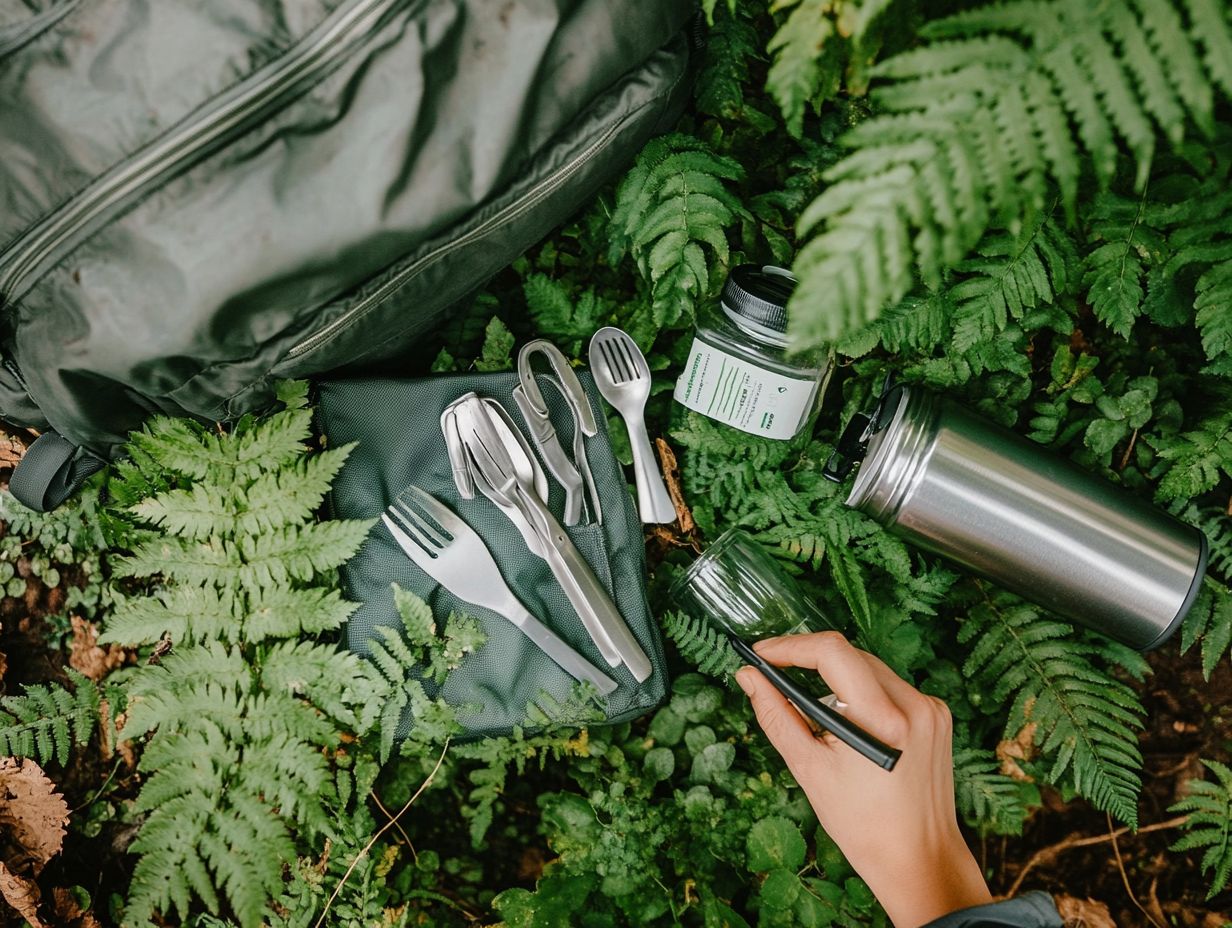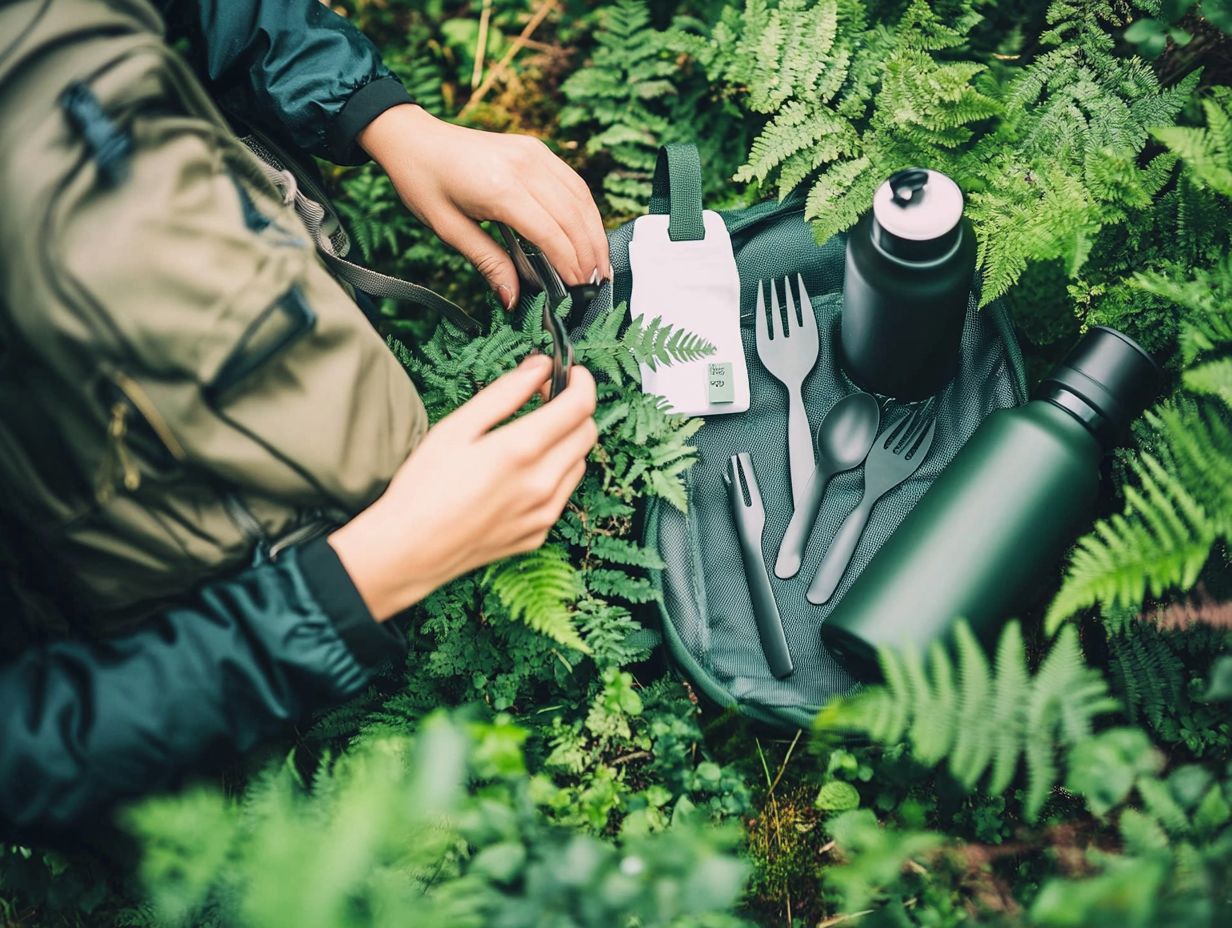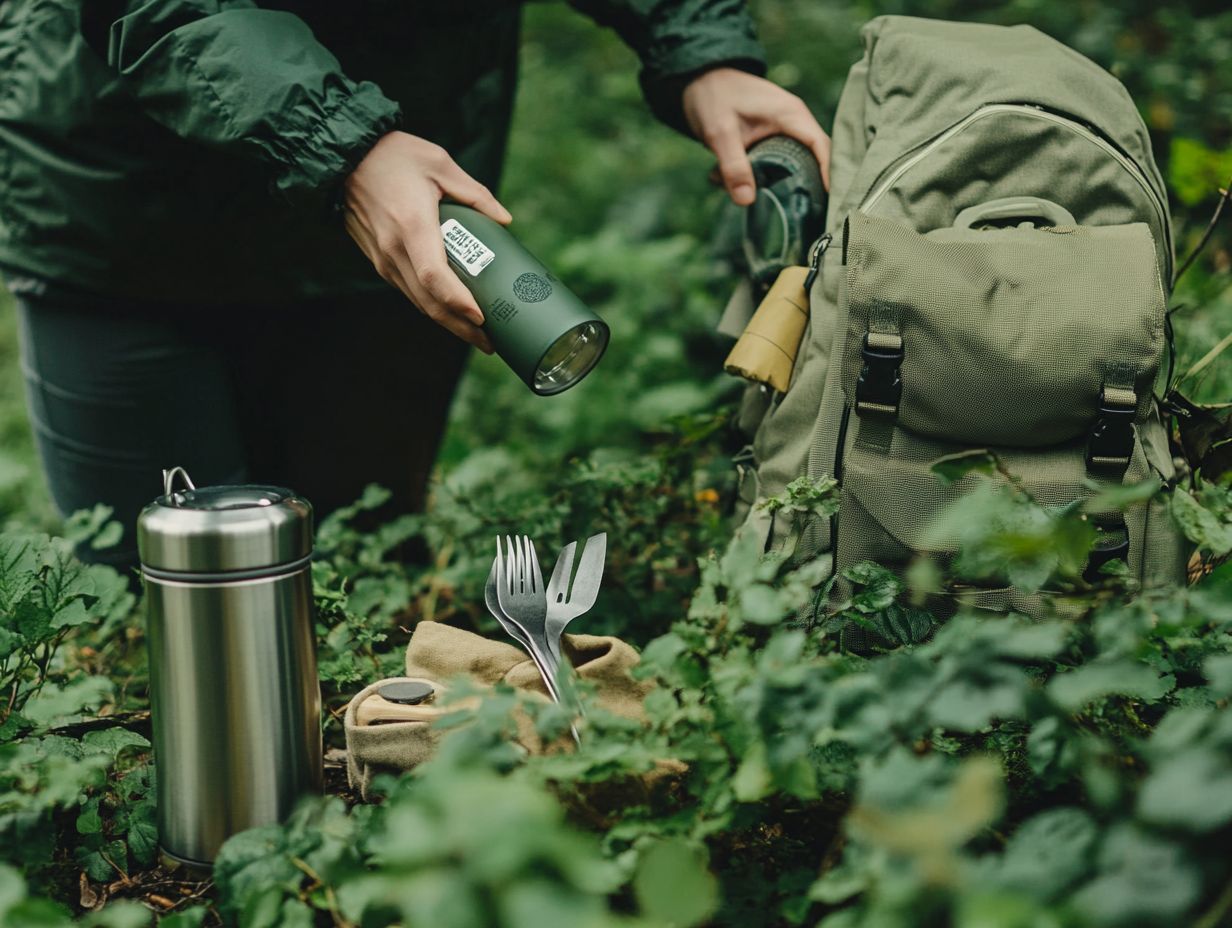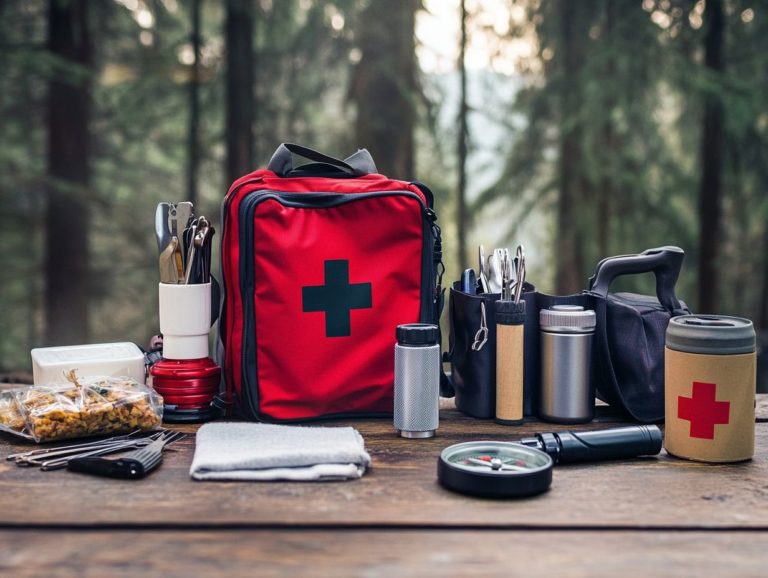How to Ensure Your Gear Is Environmentally Friendly?
In a world that s becoming increasingly aware of environmental challenges, the gear you choose holds significant sway over your ecological footprint.
This article delves into the impact of your gear on the environment, highlighting key factors you should consider from the materials utilized to sustainable shopping practices.
Discover how to select eco-friendly options, maintain them for longevity, and dispose of them responsibly.
With practical tips at your fingertips, you ll find ways to reduce your environmental impact while still enjoying your favorite activities.
Embark on this journey with us as you navigate the path to making greener gear choices!
Contents
- Key Takeaways:
- Understanding the Impact of Gear on the Environment
- Eco-Friendly Gear Materials
- How to Choose Environmentally Friendly Gear
- Proper Care and Maintenance for Eco-Friendly Gear
- Disposing of Gear Responsibly
- Ways to Reduce Your Environmental Impact While Using Gear
- Frequently Asked Questions
- What does it mean for gear to be environmentally friendly?
- How can I tell if my gear is environmentally friendly?
- What are some environmentally friendly materials commonly used in gear?
- How can I ensure my gear is produced in an eco-friendly way?
- Can I make my current gear more environmentally friendly?
- Why is it important to choose environmentally friendly gear?
Key Takeaways:

- Choose gear made from sustainable materials to reduce environmental impact. Look for durable products that last longer and save you money!
- Give your gear some love! Proper care extends its lifespan and keeps waste low.
- Dispose of your gear responsibly. Recycling helps protect our planet!
Understanding the Impact of Gear on the Environment
Understanding how outdoor gear affects the environment is crucial for outdoor enthusiasts like yourself who aim to make eco-conscious choices while considering their carbon footprint.
The decisions you make about the production and disposal of your gear can profoundly impact your carbon footprint and overall environmental effect.
Brands such as Patagonia champion responsible manufacturing and sustainable practices. They offer ethical outdoor gear that adheres to ethical standards and supports environmental advocacy, including Fair Trade initiatives.
When you learn about sustainable outdoor products, think about the lasting effects your gear has on nature and the world around you. This promotes conservation initiatives.
Environmental Factors to Consider
Dive into the exciting world of eco-friendly gear by considering key environmental factors that contribute to sustainable practices and conservation initiatives. From the materials used in production to the lifespan of the products, these elements play a pivotal role in decreasing your overall environmental impact.
Being careful about what you buy is more important than ever as you seek out gear crafted from sustainable materials that minimize your carbon footprint. Products that prioritize longevity offer better value and play a significant role in waste reduction, easing the burden on landfills.
By emphasizing durability over disposability, the gear you choose can greatly influence the demand for raw materials and energy consumption throughout its lifecycle. Supporting brands that adopt alternative practices and engage in waste reduction initiatives helps pave the way toward a more sustainable outdoor industry, ensuring that nature remains pristine for future adventurers.
Eco-Friendly Gear Materials
Opting for eco-friendly gear materials is crucial for enhancing the sustainability of your outdoor equipment. Leading ethical brands are increasingly embracing sustainable materials like recycled polyester, organic cotton, and hemp.
These choices not only reduce environmental impact but also encourage responsible consumer behaviors, supporting conscious consumerism as you align your adventures with your values.
Join us in making responsible choices today and help protect our planet for future generations!
Evaluating Sustainable Materials
Evaluating sustainable materials is crucial for grasping their overall environmental impact and durability in outdoor gear. You ll find that options like recycled polyester, organic cotton, and hemp are gaining traction among eco-friendly consumers for their waste-reducing qualities.
When assessing these innovative textiles, consider various things to look at, including resource consumption, production methods, and what happens to the product when you’re done using it. Biodegradable products naturally decompose over time, offering significant benefits by minimizing landfill waste and cutting down on greenhouse gas emissions.
As you compare different materials, you ll notice that alternatives like Tencel and cork also boast impressive sustainability profiles, thanks to their low environmental footprints. By understanding the delicate balance between functionality and ecological responsibility, you can make informed choices that enhance the longevity of your products and contribute positively to the planet’s health.
How to Choose Environmentally Friendly Gear

As an outdoor enthusiast, you have the power to make a difference! Seek out brands that showcase sustainable products, provide repair programs, and maintain transparent supply chains.
By doing so, you’re not just enhancing your outdoor experience; you’re also contributing to a healthier planet.
Factors to Consider When Shopping
When you re shopping for environmentally friendly gear, consider several factors to ensure your choices reflect responsible consumption. Outdoor fashion trends spotlight gear that aligns with ethical values while minimizing environmental impact.
You should delve into the material sourcing of products, as sustainable materials are pivotal in reducing ecological footprints. Brands that prioritize transparency and ethical production processes tend to resonate deeply with environmentally conscious consumers like yourself.
The current trend toward recycled fabrics, especially those made from ocean plastics, goes beyond being just a fashion statement; it embodies a commitment to both innovation and conservation. By exploring labels that emphasize sustainable practices from eco-friendly packaging to fair labor policies you can significantly elevate your outdoor wardrobe while making a positive contribution to the planet.
Proper Care and Maintenance for Eco-Friendly Gear
Caring for and maintaining your eco-friendly gear is essential for maximizing its longevity while reducing environmental impact. By adopting sustainable practices and using biodegradable soap, you can extend the life of your equipment and contribute to meaningful environmental initiatives.
Tips for Extending the Lifespan of Your Gear
To extend the lifespan of your gear, prioritizing proper care and maintenance is essential. By implementing best practices like regular cleaning and taking advantage of repair programs, you can significantly enhance the longevity of your equipment.
Adopting eco-conscious habits ensures that your gear remains functional while minimizing your environmental impact. For example, using biodegradable soaps for cleaning or gentle hand-cleaning methods effectively removes dirt without damaging the materials. Storing your items in cool, dry places prevents mold and mildew, which can jeopardize their durability.
Utilizing repair programs offered by many brands allows you to address minor damages, enabling you to continue using your gear rather than tossing it aside. This proactive mindset supports sustainable practices and contributes to a circular economy, making you a steward of both your equipment and the environment.
Disposing of Gear Responsibly
Disposing of gear responsibly is a vital part of eco-friendly outdoor habits and contributes significantly to waste reduction. As an outdoor enthusiast, explore a variety of options, including recycling programs, gear exchange events, and eco-friendly alternatives when your gear has reached the end of its life cycle.
By making these conscious choices, you minimize waste and help foster a healthier planet for future adventurers.
Options for Proper Disposal

When it comes to proper disposal of your outdoor gear, you have exciting options that prioritize both recycling and community support. Engaging in programs dedicated to gear exchange and recycling significantly reduces waste while promoting sustainable practices.
Consider participating in local initiatives like gear swap events. These gatherings allow you to trade gently used equipment while fostering camaraderie among fellow outdoor enthusiasts. Many recycling programs advocate for the collection of items like climbing harnesses and camping tents, ensuring these materials are repurposed in eco-friendly ways.
By getting involved in these community-driven efforts, you re not just diverting waste from landfills; you’re also inspiring others to engage in sustainable practices. Communities can effectively raise awareness about responsible gear disposal, cultivating a culture centered around environmental care.
Ways to Reduce Your Environmental Impact While Using Gear
You can significantly reduce your environmental impact while enjoying outdoor gear by making smart buying choices and adopting sustainable use practices.
As an outdoor enthusiast, embracing eco-friendly alternatives and responsible consumption helps minimize your footprint during adventures.
Practical Tips for Sustainable Use
To achieve sustainable use of your outdoor gear, implementing practical tips can greatly reduce your environmental impact while enjoying outdoor activities. Embracing eco-friendly alternatives and mindful practices is essential for responsible consumption.
Start by considering alternative transportation methods, such as biking, carpooling, or using public transit. These choices dramatically lower your carbon footprint. While exploring, limit waste by bringing reusable water bottles and containers for snacks, minimizing reliance on single-use plastics.
Opting for eco-friendly products like biodegradable soaps and sustainably sourced gear ensures that you leave a lighter footprint on the environment. To further enhance your outdoor experience, consider understanding what makes camping equipment eco-friendly. These small yet impactful choices reflect your commitment to preserving natural spaces, turning your outdoor adventures into enjoyable and responsible experiences.
Frequently Asked Questions
What does it mean for gear to be environmentally friendly?
Environmentally friendly gear refers to products designed, produced, and used to have minimal negative impact on the environment. This includes using sustainable materials, reducing waste and pollution, and promoting responsible use and disposal.
How can I tell if my gear is environmentally friendly?

Look for products with third-party certifications or labels indicating they are environmentally friendly, such as the Forest Stewardship Council (FSC) or Global Organic Textile Standard (GOTS) labels. Research the brand’s sustainability practices and the materials used in their products.
What are some environmentally friendly materials commonly used in gear?
Common environmentally friendly materials include organic cotton, hemp, bamboo, recycled polyester, and sustainable woods like bamboo or cork. These materials are renewable, biodegradable, and have a lower impact on the environment compared to traditional materials like polyester and nylon.
How can I ensure my gear is produced in an eco-friendly way?
Choose brands with clear and sustainable production methods. Look for those using renewable energy and fair labor practices.
Support brands that embrace a circular economy. This means they design products that can be recycled or repurposed.
Can I make my current gear more environmentally friendly?
Yes, you can make your gear more eco-friendly.
Repair and upcycle old gear instead of buying new. Use eco-friendly cleaning products and dispose of unusable items responsibly.
Look for brands offering repair services or take-back programs.
Why is it important to choose environmentally friendly gear?
Choosing eco-friendly gear protects our planet and supports sustainable practices!
Your choice can lead to a healthier planet for future generations. Let’s make a difference together!






